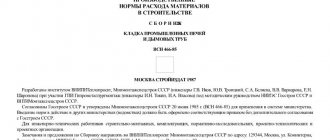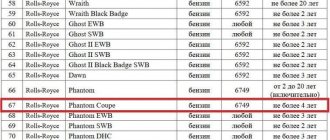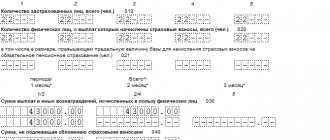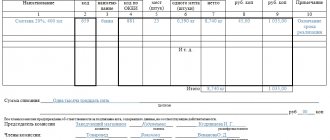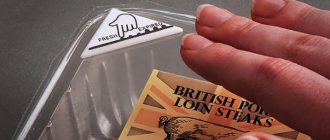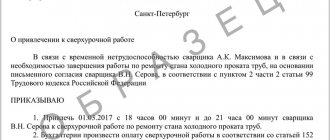Expenses for fuel and lubricants can be taken into account both in accounting and tax accounting (subclause 11, clause 1, article 264 of the Tax Code of the Russian Federation). There is no specific document regulating the write-off of fuel and lubricants for tax accounting purposes. However, inspectors strictly monitor the procedure for drawing up primary documents on the operation of vehicles and machinery, and the economic justification for writing off fuel.
For tax accounting purposes, it is recommended (although not mandatory - see letters from the Ministry of Finance of Russia dated January 27, 2014 No. 03-03-06/1/2875, dated June 3, 2013 No. 03-03-06/1/20097, dated January 30, 2013 No. 03-03-06/2/12) rely on standards developed by state bodies or independently establish them, using control runs, developments, activated by taxpayer employees or third-party (independent) persons. Also, to determine the consumption of fuel and lubricants, you can use data from various metering and monitoring devices for the movement of vehicles using the GLONASS satellite navigation system, automated systems for monitoring fuel in tanks, etc. (letter of the Ministry of Finance of Russia dated June 16, 2011 No. 03-03-06/1/354).
The concept of fuel and lubricants standards
Fuel consumption on company vehicles cannot occur uncontrollably and irregularly, otherwise overexpenditures and possibly even waste cannot be avoided. To control and account for the amount of fuel and lubricants, the concept of fuel consumption rate - an economically sound indicator that reflects the average need for fuel (gasoline, gas, diesel fuel) for various types of service vehicles for a certain mileage.
The generally accepted and most convenient method is to calculate fuel consumption per 100 km.
In addition, fuel consumption standards are required:
- for reporting;
- determining the cost of a specific trip involving company vehicles (or all trips in general);
- tax calculations.
Cost indicators for fuel and lubricants are not standardized: each organization can spend as much on fuel as it considers necessary and as much as the production process requires.
It should be remembered that when calculating income tax, only justified expenses are taken into account. Inspectors may ask to provide documents that confirm the validity of costs (for example, information on control measurements of fuel and lubricants costs).
Who sets the standards for fuels and lubricants?
The Ministry of Transport of the Russian Federation gives recommendations on fuel rationing. However, they have remained unchanged since 2020 (the latest order of the Ministry of Transport of the Russian Federation regarding fuel standards No. AM-23-r is dated July 14, 2020), which does not fully reflect the current situation today.
The Ministry of Finance of the Russian Federation made an official clarification on this matter: in Letter No. 03-03-06/1/48789 dated August 19, 2020, it is stated that following the standards established by the Ministry of Transport is a right, not an obligation of an entrepreneur. Tax authorities do not have the right to insist on compliance with these particular indicators when writing off fuel and lubricants.
Fuel consumption and write-off standards in force for each specific company must be adopted, approved and recorded in internal documentation.
NOTE! For motor transport companies, unlike other legal entities and entrepreneurs, accounting for fuel costs according to the recommendations of the Ministry of Transport is mandatory.
Is it mandatory to apply fuel consumption standards of the Ministry of Transport of the Russian Federation?
The Ministry of Transport of the Russian Federation established fuel consumption standards on March 14, 2008 in the table of order No. AM-23-r.
The latest edition of the document for 2019 is the order of the Ministry of Transport dated 04/06/2018 No. NA-51-r. The department has expanded the list of cars, buses, trucks, vans and other vehicles. It also adjusted the fuel consumption limits, the table with the maximum values of winter allowances to the standards and the procedure for applying the increasing coefficient, etc.
The list includes such domestic car brands as Lada Granta, Lada Priora, Lada Vesta, UAZ-Patriot and others listed in Table 1.
Table 1. New car brands in Order of the Ministry of Transport No. AM-23-r
Changes have been introduced regarding the transport used by:
- in cities with a population of 1 to 5 million people - the norm was increased by 25%;
- in cities with a population of over 5 million people, the rate was increased by 35%.
The procedure for applying the increasing coefficient to the standards depending on the age and mileage of the car has undergone changes. Now the coefficient can be used:
- up to 5% when the car’s mileage is more than 100,000 kilometers or its age exceeds 5 years;
- up to 10% when the car’s mileage is more than 150,000 kilometers or its age exceeds 8 years.
Let us remind you that fuel costs are normalized:
- according to the basic norm (the number of liters for every 100 km, taking into account the average vehicle load);
- according to the transport norm (the number of liters for every 100 km of travel, taking into account transport work);
- according to the bus norm (vehicle weight and standard passenger load);
- according to the dump norm (weight and standard vehicle load);
- according to the transport norm in liters and ton-kilometers (for trucks).
Order No. IA-159-r dated September 20, 2018 provides for the possibility of choosing the procedure for calculating the basic fuel consumption rate for the mileage of a passenger car:
- According to the formulas established previously by order No. AM-23-r
- Based on fuel consumption information received from the car manufacturer. Moreover, the data must be compiled according to the Worldwide harmonized Light vehicles Test Procedures WLTP (Worldwide harmonized Light vehicles Test Procedures) in accordance with the United Nations Global Regulations No. 15 “Worldwide Harmonized Light Vehicles Test Procedures”.
Previously, the Ministry of Finance of the Russian Federation and tax authorities argued that it was within the limits of the Ministry of Transport that fuel costs should be written off.
But for some vehicle models there are no standards from the Ministry of Transport. What to do in such a situation? For a long time, officials believed that at first they could be guided by the relevant technical documentation and (or) information from the machine manufacturer. And in the future, you need to contact a specialized organization that will develop indicators specifically for your company’s car.
But in 2013, the department’s position changed. In letter dated January 30, 2013 No. 03-03-06/2/12, the Ministry of Finance indicated that the Tax Code does not provide for rationing of such expenses. Therefore, the company itself must decide to take into account the recommendations of the Ministry of Transport or not.
Thus, without disputes with inspectors, you can use the limits that the company has developed for itself independently. Practice shows that when such disputes arise, the judges are on the side of the companies. In their decisions, they emphasize that Chapter 25 of the Tax Code does not require rationing fuel costs.
It is advisable to separately approve summer and winter fuel consumption standards. In addition, the limit may depend on the population in the region where the machine will be operated. The necessary correction factors can also be approved by order of the organization.
If a company exceeds the established limits and cannot document the validity of this excess, then the costs of fuel and lubricants in excess of the standards established by it cannot be taken into account when calculating income tax.
In this case, exceeding the limit costs for fuels and lubricants will not be economically justified.
Surcharges to fuel consumption standards.
1. Methodological recommendations “Standards for the consumption of fuels and lubricants in road transport”, approved by Order of the Ministry of Transport of the Russian Federation No. AM-23-r dated March 14, 2008, provide for an increase or decrease in fuel consumption rates depending on the operating conditions of the vehicle.
2. Taking into account road transport, climatic and other operational factors that change the fuel consumption rate is carried out using correction factors (surcharges), regulated in the form of percentage increases or decreases in the initial value of the standard (their values are established by order or instruction of the management of the enterprise operating the vehicle, or local administration).
3. Fuel consumption rates can be reduced when working on public roads of categories I, II and III outside the suburban area on flat, slightly hilly terrain (altitude up to 300 meters above sea level) - up to 15%. (one case of decline).
4. In the case when vehicles are operated in a suburban area outside the city boundaries, correction (urban) coefficients are not applied.
5. If it is necessary to apply several surcharges simultaneously, the fuel consumption rate is established taking into account the sum or difference of these surcharges.
a) the operation of vehicles in the winter season, depending on the climatic regions of the country - from 5 to 20% inclusive. The procedure for application, values and validity periods of winter allowances are presented in Appendix 2 of the above guidelines.
Example: the validity period of winter allowances in one of the regions of Russia is 5 months. The administration of a region, city, district, settlement, by its order, can establish the validity period of allowances for the months of the winter period at a single maximum value (for example, 10% for November, December, January, February, March) or differentiated for each month. If there is no order from the administration, then the enterprise (organization) by its order establishes winter allowances independently.
– from 300 to 800 meters – up to 5% (lower mountains);
– from 801 to 2000 meters – up to 10% (mid-mountain);
– from 2001 to 3000 meters – up to 15% (high mountains);
– over 3000 meters – up to 20% (high mountains).
c) the operation of vehicles on public roads (I, II and III categories) with a complex layout, outside cities and suburban areas, where on average there are more than five curves with a radius of less than 40 m per 1 km of road (or per 100 km of road - about 500 turns) - up to 10%, on public roads of categories IV and V - up to 30%.
Category IV includes roads with a hard surface made of cobblestones and gravel, category V includes profiled roads that do not have a hard surface (running on natural soil).
– over 5 million people – up to 35%;
– from 1.0 to 5.0 million people – up to 25%;
– from 250 thousand to 1.0 million people – up to 15%;
– from 100 to 250 thousand people – up to 10%;
– up to 100 thousand people – in cities, towns and other large populated areas (if there are controlled intersections, traffic lights or other traffic signs) – up to 5%.
e) operation of vehicles during frequent technological stops associated with loading and unloading, boarding and disembarking passengers, including route taxis - buses, passenger-and-passenger and small-class trucks, pickup trucks, station wagons, including transportation of products and small cargo, mailbox servicing, money collection, servicing pensioners, disabled people, sick people, etc.
e) transportation of non-standard, large-sized, heavy, dangerous cargo, cargo in glass, etc., movement in convoys and accompanied, and other similar cases with a reduced vehicle speed of 20-40 km/h - up to 15%, with a reduced average speed below 20 km/h – up to 35%;
g) when running in new cars and those that have undergone major repairs (mileage is determined by the manufacturer of the equipment) - up to 10%; In the case of centralized transportation of cars under their own power in a single state or in a convoy - up to 10%; when hauling - towing vehicles in a coupled state - up to 15%, when hauling - towing in a tunable state - up to 20%;
h) for cars that have been in operation for more than 5 years with a total mileage of more than 100 thousand km - up to 5%, for more than 8 years or with a total mileage of more than 150 thousand km - up to 10%;
i) when operating trucks, vans, cargo taxis, etc. excluding transport work - up to 10%;
j) when operating vehicles as technological transport, including work within an enterprise - up to 20%
k) during the operation of special vehicles (patrol vehicles, filming vehicles, repair vehicles, aerial platforms, forklifts, etc.) performing the transport process when maneuvering at low speeds, with frequent stops, reversing, etc. – up to 20%;
– for vehicles in running order (without cargo) – up to 20%;
– for vehicles with a full or partial vehicle load – up to 40%;
m) when working in extreme climatic and difficult road conditions during seasonal thaw, snow or sand drifts, heavy snowfall and ice, floods and other natural disasters for roads of I, II and III categories - up to 35%, for roads IV and V categories – up to 50%;
n) during training driving on public roads – up to 20%. When driving for training on specially designated training areas, when maneuvering at low speeds, with frequent stops and reversing – up to 40%;
o) when using the “climate control” setting (regardless of the time of year) when the car is moving - up to 7%;
Accounting for fuel and lubricants standards
When drawing up a balance sheet, the accountant enters the fuel consumption indicator for write-off:
- in the column “Material expenses”, if the quantity fits into the standards established by the enterprise;
- partially - in the column “Non-operating expenses”, if the spent fuel and lubricants exceed the limits (the amount that exceeds the norm is entered in this column).
For this purpose, account 10 “Fixed assets” with the corresponding subaccounts is used.
The supporting document on the basis of which the calculation of actually consumed fuel is made is a waybill , the form of which the enterprise is allowed to develop independently, as well as coupons, checks, certificates, etc., confirming the purchase of fuel at a certain price.
Additional types of standards
In addition to the basic norm, the Ministry of Transport introduces concepts such as:
- Transport norm. It is based on a basic indicator of the use of fuel and lubricants, taking into account the influence of the transported cargo (weight, presence of a trailer or passengers). An example would be the difference in fuel consumption between a loaded vehicle pulling a massive trailer and when driving an empty dump truck.
- Operating standard. It can be based on both basic and transport values, taking into account the characteristics of vehicle operation in a given area, climatic conditions, etc. For example, when driving on winding roads, serpentines, when you constantly have to slow down, much more fuel is used than on straight sections of the route. Also, when operating an air conditioner or heater, additional fuel is required, which changes the performance.
The use of these standards allows you not to recalculate the basic values each time, but to use adjusted data for certain conditions, specifics or terrain. It becomes possible to reduce calculations and eliminate the possibility of errors.
In the event of changes or the appearance of additional specific factors affecting the amount of fuel consumption, these standards can be recalculated and adjusted, but all changes must be economically and technically justified, otherwise tax inspectors will have questions and doubts about the reliability of the proposed data.
The value of correction factors is regulated by the Ministry of Transport, expressed as a percentage of the base value and approved by order of the enterprise management.
The use of standardized fuel consumption values makes it possible to simplify reporting, justify the amount of fuel written off, and also reduce the risk of abuse.
Existing coefficients that take into account the operating conditions of engines, the presence of additional equipment, distances or complexity of operation make it possible to fairly fully reflect existing fuel consumption, excluding the possibility of inappropriate costs or overruns.
It is noteworthy that it is not necessary to use standard values in reporting; it is allowed to use actual values, but for this you will have to have supporting documents - checks, receipt stubs, etc. — that is, all documents that can justify the consumption and write-off of fuel.
For small companies that do not have many cars, this option may be more profitable.
In any case, the method of reporting on fuel consumption is the choice of management and accountant; the tax code does not regulate this issue too tightly. The main task seems to be the accuracy and validity of the write-off of materials.
What determines the value of the fuel and lubricants indicator?
Recommended by the Ministry of Transport of the Russian Federation or independently developed by the enterprise, fuel write-off standards depend on objective factors:
- type of transport (passenger car, truck, truck, special purpose vehicle, etc.);
- specific car brand;
- its mileage;
- the period during which the car is in operation;
- basic fuel consumption;
- some established coefficients - seasonal, territorial, road, load-lifting, etc.
How to use approved recommendations
When writing off fuel resources, the Ministry of Transport of the Russian Federation recommends adhering to the following rules:
- enterprises whose activities are aimed at carrying out cargo transportation write off fuel and lubricants using waybills, which record the mileage of vehicles;
- for accounting purposes, special accounts and sub-accounts are used (receipt fuel is taken into account in the debit of account 10, written-off fuel is taken into account in the credit of the same account);
- tax accounting provides for write-off in material or other expenses (fuel and lubricant costs for vehicles transporting goods are taken into account in material costs, and fuel costs for company cars are included in other expenses);
- tax accounting can be carried out both using standards and with the actual amount of fuel and lubricants;
- for vehicles not specified in the recommendations of the Ministry of Transport of the Russian Federation, standards can be calculated individually.
In the cold season, fuel and lubricant cost rates increase by 5%-20%. A similar allowance is added when traveling in mountainous areas. Increasing factors are also applied taking into account the age of the vehicles. The longer the car is used, the greater the increasing coefficients.
What does the Ministry of Transport say?
The document-order of the Ministry of Transport establishing recommended standards is methodological in nature. It provides basic indicators of gas, diesel, and gasoline consumption for specific brands of vehicles, also differentiated by class and model. Using these tables you can conveniently keep fuel records.
Below are fuel standards for the most common representatives of the company fleet. A complete list of all vehicles provided by the Russian Ministry of Transport (about 800 brands) with the corresponding standards for fuel and lubricant costs can be downloaded from the link below.
FILES
How to reflect information about fuel consumption on a waybill
Information on fuel consumption is not included in the list of mandatory details approved by Order of the Ministry of Transport of the Russian Federation dated September 18, 2008 No. 152, but they must be included to simplify the calculation of spent fuel. The unified waybill form contains 3 columns designed to reflect the movement of fuel and lubricants. They must indicate:
- balance of fuel and lubricants at the beginning of the voyage;
- quantity of fuel and lubricants purchased during the voyage;
- remaining fuel and lubricants at the end of the voyage.
Based on arithmetic operations with these indicators, fuel consumption is calculated according to the standard and actually. You can view a sample waybill with fuel and lubricants readings below:
If, when using an independently developed waybill, fuel and lubricants indicators are not indicated, then fuel consumption is calculated based on the standards of the Ministry of Transport.
Expenses for fuel and lubricants do not need to be taken into account for tax purposes if the employee is paid compensation for the use of personal transport. This is indicated in the Letter of the Ministry of Finance of the Russian Federation dated April 10, 2017 No. 03-03-06/1/21050. Such compensation is allowed to be written off only within the established standards, as stated in Decree of the Government of the Russian Federation No. 92 dated 02/08/2002. It is believed that the costs of fuel and lubricants are already included in the employee’s compensation for personal transport, and therefore their reuse in tax accounting is violation.
Self-calculated fuel consumption
Despite the fact that the organization has the right to use the standards of the Ministry of Transport, which sometimes turns out to be preferable, since it is recommended by tax authorities, you can make your own calculations based on the fuel and lubricants standards established by internal regulations.
A simplified version involves finding the quotient of the amount of fuel spent and the kilometers traveled (to establish a percentage, the figure is multiplied by 100). The result will be an indicator in the “usual” form, reflecting the required amount of fuel and lubricants for 100 km of travel on a given vehicle. Then, if necessary, you can apply the appropriate coefficients to it.
A more complex formula used to calculate this indicator takes into account the specific brand of car and the fuel standard established for it (from the Ministry of Transport table or internal regulations of the organization itself). The amount of cargo or passengers on board the vehicle, the driving mode, and some other errors (winter coefficient, correction for road type, etc.) are also taken into account.
Nexp. = 0.01 x Npres. x (1 + x K x 0.01)
Where:
- Nexp. – calculated fuel consumption rate for write-off (measured in liters);
- Npresupposed – the standard provided for in the documents of the organization or by the Order of the Ministry of Transport of the Russian Federation;
- S – mileage traveled by this car;
- K is the coefficient taken into account when taking into account various corrections.
Example of a specific calculation
A company car belonging to Volta LLC, a Toyota Corolla with an engine capacity of 1.6 liters, made a trip marked on the waybill with a distance of 650 km. At the same time, he spent 62 liters of gasoline. There was no cargo on board (documents were delivered). The trip was made in winter; the winter surcharge established by Volta LLC is 5%. The company uses indicators from the table of the Ministry of Transport of the Russian Federation for calculations.
Let's calculate fuel consumption for write-off. According to the Order of the Ministry of Transport, the fuel consumption rate for a car of this brand traveling without a load is 9 liters per 100 km. We take the winter coefficient as 5. This trip on a car of this brand does not provide for any other surcharges under the given conditions. Let's calculate using the formula: 0.01 x 9 x 650 (1 + 5 x 0.01) = 0.09 x 650 x 1.05 = 61.4 liters.
As you can see, the driver of a company car practically did not exceed the gasoline consumption required by the standard.
print version
Home > Articles > Tanks and reservoir equipment >
- print version
Losses of petroleum products at gas stations and oil depots are calculated according to the “Norms for the natural loss of oil and petroleum products during acceptance, release, storage and transportation,” approved by the USSR State Supply Committee dated March 28, 1986 No. 40. Application of the norms is mandatory for all organizations and enterprises. These loss rates are established depending on the group of petroleum products, season of the year, climatic conditions and type of tank.
Petroleum products , depending on the physicochemical properties that determine their natural loss, are distributed into eight groups (Table 1).
The calendar year is divided into two periods: autumn-winter (from October 1 to March 31 inclusive) and spring-summer (from April 1 to September 30 inclusive). To apply standards depending on climatic conditions, the territory of the CIS is divided into five climatic zones (Table 4).
The norms for natural loss are maximum permissible and are applied only in cases of actual shortage of petroleum products .
Table 1
Distribution of petroleum products by groups
| Group | Name of petroleum product |
| 1 | |
| Automotive gasoline, GOST 2084-77 | |
| Automotive gasoline, AI-96 “Extra”, OST 38019-75 | |
| 2 | |
| Gasoline solvent, GOST 443-76 | |
| Aviation gasoline, GOST 1012-72 | |
| Vacuum oil VM-3 | |
| Jet fuel T-2, GOST 10227-86 | |
| Aviation gasoline, GOST 3134-78 | |
| 3 | |
| Gasoline solvent, GOST 3134-78 | |
| Vacuum oil BM-6 | |
| Jet fuel (except T-2), GOST 10227-86 | |
| RT fuel for jet engines | |
| Kerosene for technical purposes | |
| 4 | |
| Technical ethylbenzene, GOST 9385-77 | |
| Kerosene for lighting | |
| Diesel fuel “Winter” and “Arctic”, GOST 305-82 | |
| 5 | |
| Oil AMG-10 (MG-15V), GOST 6794-75 | |
| Diesel fuel except “Winter” and “Arctic”, GOST 305-83 | |
| Motor fuel for medium-speed and low-speed diesel engines, GOST 1667-68 | |
| Petroleum fuel for gas turbine units, GOST 10433-75 | |
| Household heating fuel TPB, TU 38 101656-76 | |
| Export diesel fuel, TU 38 001162-73 | |
| 6 | |
| Fuel oils of all brands | |
| Lubricating oils of all brands | |
| Petroleum liquid bitumens | |
| Other petroleum products | |
| 7 | |
| Lubricants of all brands | |
| Hard bitumen | |
| Various pastes | |
| Ceresin | |
| Various solid petroleum products | |
| 8 | |
| Different oils | |
table 2
Measures to prevent and reduce losses of petroleum products at gas stations
| Sources and causes of oil product losses | Events |
| Evaporation of petroleum products from tanks as a result of large and small “breathing” | |
| Gas piping of tanks into a common breathing system. | |
| Use of high pressure breathing valves. Reducing the duration and frequency of fuel drains due to parallel draining through several hoses from heavy-duty tankers. | |
| Increasing the average tank fill factor. | |
| Application of a system for capturing and condensing gasoline vapors displaced from tanks during draining. | |
| Losses of petroleum products when draining from tank trucks into gas station tanks | |
| Application of perfect hermetic connecting devices. | |
| Installation of metal drain wells over tanks. | |
| Systematic monitoring of the serviceability of the drain hose and its connections. | |
| Application of a complete drain indicator from a tanker. | |
| Losses when refueling vehicles | |
| Use of automatically shut-off fuel taps. | |
| Visual control by the operator of refueling sites. | |
| Using variable capacity columns. | |
| Leaks of petroleum products from tanks and pipelines as a result of violation of their tightness | |
| Timely and high-quality implementation of routine maintenance work. | |
| The use of vertical tanks installed in reinforced concrete wells. The use of controlled, upper foot valves on the suction pipeline. | |
| Spills and leaks during equipment maintenance and repair | |
| Use of special tools and equipment when working on maintenance and repair. Construction of special platforms for installation of tank trucks during drainage. | |
| Incomplete drainage of petroleum products from tank trucks into A3C tanks | |
| Monitoring the serviceability of breathing valves and drain filters. Use of special drain indicators. | |
Table 3
Shelf life of petroleum products (years), established taking into account the formation of actual resins and the instability of tetraethyl lead
| Petroleum product | Storage method | Climate zone | ||
| Northern | Average | South | ||
| Gasoline | In above ground tanks | 1,5 | 1,5 | 1 |
| Diesel fuel | ||||
| In underground tanks | 2 | 2 | 1,5 | |
| In any tanks | 6 | 6 | 6 | |
| Oils | In any tanks | 4 | 4 | 3 |
Table 4
Norms of natural loss of petroleum products during reception, storage, release at gas stations and refueling points (kg/t) of the accepted quantity (Resolution of the USSR State Supply Committee dated March 24, 1986)
| Tank type | Gr. petroleum products | Climate zones and periods | |||||||||
| 1 | 2 | 3 | 4 | 5 | |||||||
| os.-winter | weight - summer | os.-winter | weight - summer | os.-winter | weight - summer | os.-winter | weight - summer | os.-winter | weight - summer | ||
| Ground steel | |||||||||||
| 1 | 0,38 | 0,60 | 0,54 | 0,99 | 0,72 | 1,05 | 0,74 | 1,25 | 0,8 | 1,16 | |
| 5 | 0,02 | 0,02 | 0,03 | 0,03 | 0,03 | 0,03 | 0,03 | 0,03 | 0,03 | 0,03 | |
| 6 | 0,12 | 0,12 | 0,12 | 0,12 | 0,12 | 0,12 | 0,12 | 0,12 | 0,12 | 0,12 | |
| Land-based steel with pontoon | 1 | 0,15 | 0,30 | 0,27 | 0,40 | 0,40 | 0,56 | 0,41 | 0,62 | 0,45 | 0,63 |
| Recessed | |||||||||||
| 1 | 0,23 | 0,30 | 0,36 | 0,40 | 0,48 | 0,56 | 0,49 | 0,68 | 0,56 | 0,70 | |
| 5 | 0,01 | 0,02 | 0,01 | 0,02 | 0,02 | 0,02 | 0,02 | 0,02 | 0,02 | 0,02 | |
| 6 | 0,12 | 0,12 | 0,12 | 0,12 | 0,12 | 0,12 | 0,12 | 0,12 | 0,12 | 0,12 | |
Notes: 1) norms of natural loss do not apply to petroleum products accepted and handed over by invoice (packaged products); 2) the norms for natural loss do not include losses of petroleum products associated with the repair and cleaning of tanks , pipelines , all types of emergency losses, as well as losses during intra-warehouse pumping; 3) the norms of natural loss are maximum and are applied only in case of actual shortages. The write-off of petroleum products within the limits of natural loss until the fact of shortage is established is prohibited; 4) Tyumen region - 2 zone, Khanty-Mansiysk Autonomous Okrug - 1 zone.
Table 5
Dependence of monthly gasoline losses on the number of cycles of loading and unloading operations, t
| Tank capacity, m3 | Number of unloading operations per month | |||
| 10 | 20 | 30 | 40 | |
| 50 | 0,18/0,3 | 0,35/0,6 | 0,55/0,9 | 1,1/1,8 |
| 100 | 0,35/0,6 | 0,7/1,2 | 1,1/1,8 | 2,8/3,6 |
| 150 | 0,5/0,9 | 1,0/1,8 | 1,5/2,7 | 3,0/5,4 |
| 200 | 0,7/1,1 | 1,4/2,2 | 2,1/3,3 | 2,8/6,6 |
| 250 | 0,85/1,4 | 1,7/2,8 | 2,6/4,2 | 5,2/8,4 |
Notes: 1) losses are determined from the condition of containing 1 m3 of the steam-air mixture of the tank, in winter - 0.35 kg, in summer - 0.56 kg of gasoline vapor; 2) the numerator shows losses in the winter period, and the denominator shows losses in the summer.
Return to list of articles

